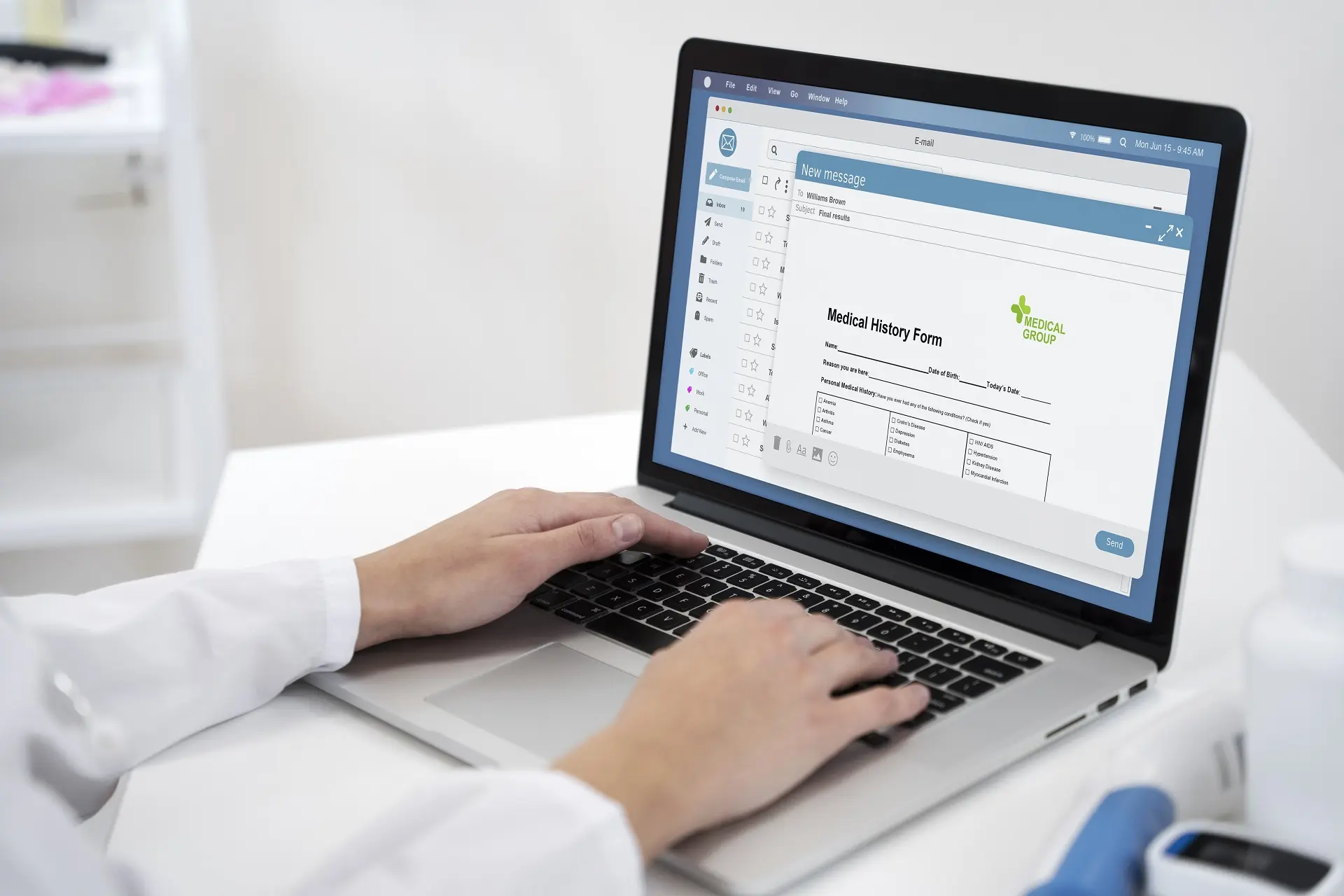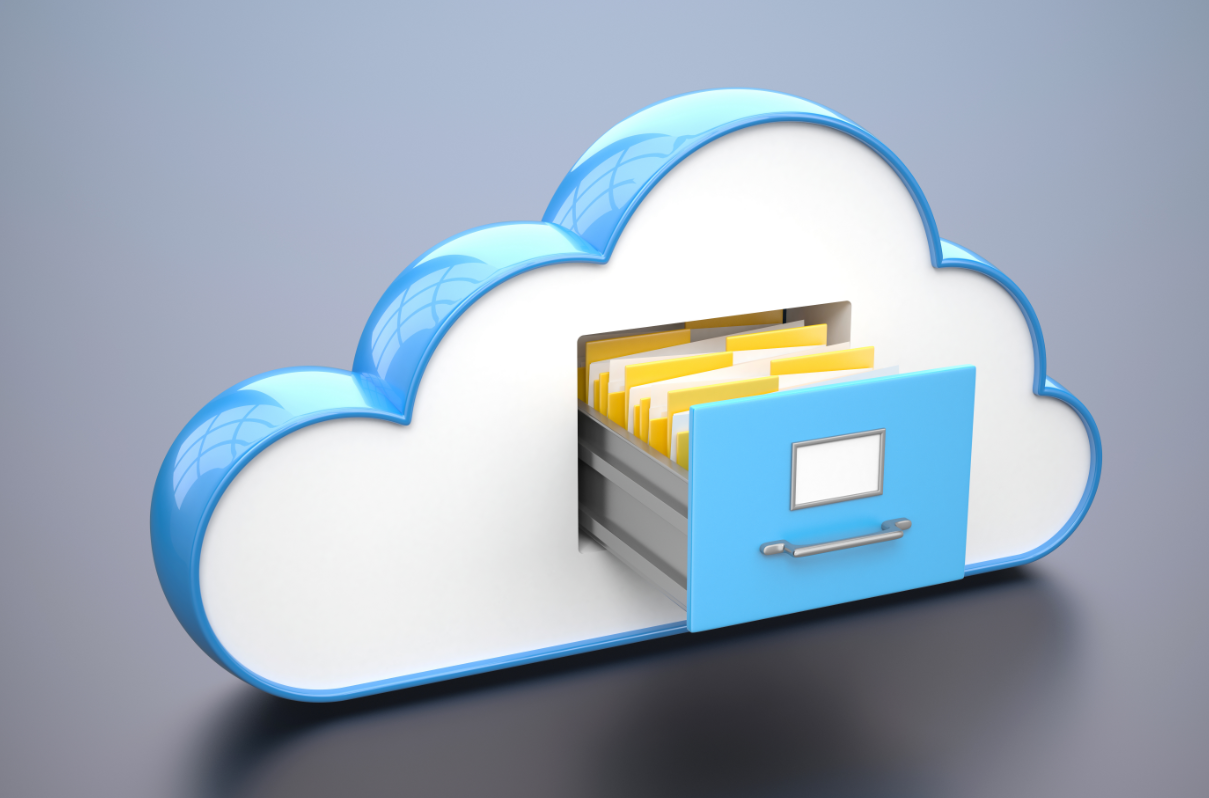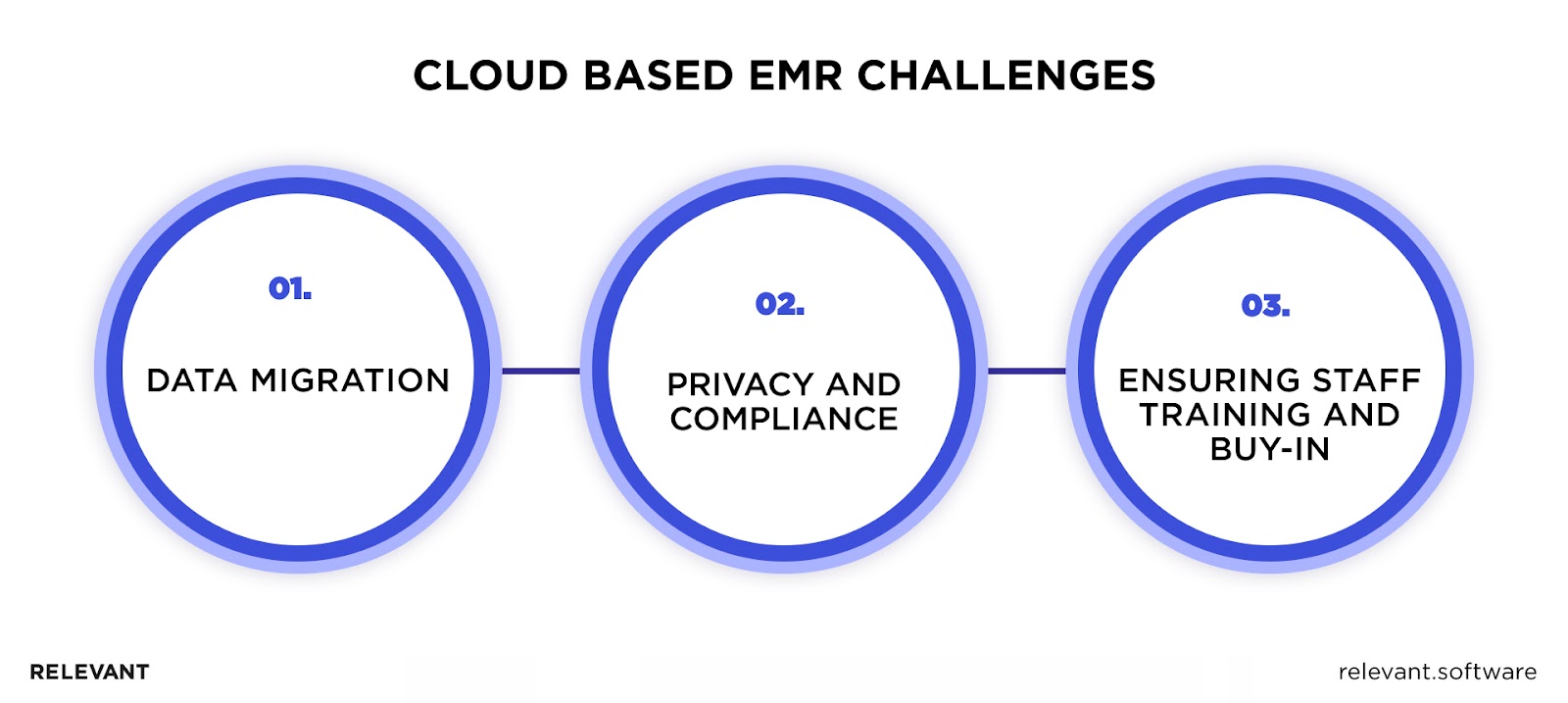Advancing Healthcare with Cloud Based EMR

Have you ever had one of those lightbulb moments when using new technology, thinking, “How did I get along without this before?” Well, the healthcare world is having that moment with Cloud Based EMRs. Imagine tapping into patient data instantly, from anywhere, leaving behind the days of cumbersome paperwork and clunky systems.
But this isn’t just about making things smoother; it’s about redefining patient care. That’s precisely why the global EMR market is in a sprint. We’re talking about jumping from $31.22 billion in 2023 to $40.05 billion by 2028. That’s a steady climb of 5.11% annually. Quite the ride, isn’t it?
But what’s driving this growth? What’s the big deal about Cloud Based EMRs? Come along as we explore these questions. Whether you’re a seasoned medical professional, someone in healthcare administration, or just curious about where healthcare is headed, there’s something here for you.
What is an EMR (Electronic Medical Record)?
Remember how we’ve swapped bulky photo albums for sleek digital galleries on our phones? Similarly, in the medical realm, we’re trading those stacks of papers and color-coded files for something more efficient: the EMR.
EMR, or Electronic Medical Record, is like the digital dashboard of a patient’s health journey. It’s a comprehensive, real-time digital library that houses everything – from the scribbled notes of a doctor to those critical prescriptions, immunization schedules, and, yes, those pesky allergy alerts.
Why is the healthcare world excited about EMR? Well, it’s more than just a trendy digital solution. It’s about real-time access and the highest accuracy. Physicians no longer need to wade through paperwork jungles. With just a click, they get the latest patient data. It’s not only a massive time-saver but also a key error-reducer. And let’s face it, in healthcare, fewer errors mean happier, healthier patients. So, think of EMR as the upgrade that the healthcare industry not only wanted but really needed.

The Difference Between an EMR and an EHR
Now, you might have heard of EHR and thought, “Isn’t that the same thing?” Nope! It’s like mistaking an apple for an orange. Sure, they’re both fruits, but they’ve got their unique taste.
An EMR stays within one specific doctor’s office or clinic. It’s the digital transformation of the paper chart you’d see in that particular place. On the other hand, EHR, or Electronic Health Record, takes it a step further, connecting records across different healthcare providers. So, while EMR focuses on the now and here, EHR paints a broader picture.
| Aspect | EMR (Electronic Medical Record) | EHR (Electronic Health Record) |
| Scope | Primarily focuses on a patient’s medical history within one practice. | Shared records that can be accessed by various authorized healthcare providers |
| Access | Used mainly by providers for diagnosis and treatment in a single institution. | Limited. The information doesn’t travel outside of the practice. |
| Interoperability | Limited. Information doesn’t travel outside of the practice. | Designed for sharing data with other healthcare providers, labs, and specialists. |
| Primary Purpose | A digital version of the paper charts within a single clinic or practice. | Comprehensive health overview, allowing for improved and coordinated care. |
| Data Retrieval | Can be challenging to extract information for sharing outside the practice. | Easier access and sharing capabilities, promoting holistic healthcare. |
| Patient Engagement | Patients usually don’t have direct access. | Encourages patient access, often integrated with portals for patients to view their records. |
See the difference? It’s all about taking healthcare into the digital age, one step at a time, making it more accessible and transparent for everyone involved.
Cloud Adoption in Healthcare
Healthcare has historically been a little slower in absorbing new technologies. Concerns over patient privacy, data security, and the sheer vastness of medical data have made many hesitant. But times are changing. The need for real-time access to patient data, efficient collaboration between medical professionals, and a drive to improve patient outcomes have pushed healthcare to embrace the cloud.
The cloud isn’t just a lofty tech term. It’s about ensuring a patient in a rural clinic gets the same care level as someone in a metropolitan hospital. It’s about a doctor being able to pull up a patient’s history during an emergency in seconds rather than minutes. And most importantly, it’s about breaking down data silos to ensure the patient is at the center of care, no matter where they are.

Key Reasons to Move Your EMR to the Cloud
Moving your EMR to the cloud is a game plan for better, more efficient healthcare. Why? Let’s break it down.
Scalability and Flexibility
As your practice grows and changes, you need an EMR system that can adapt without breaking a sweat. That’s where the cloud comes in. Need more storage? No problem. More processing power for that sudden influx of patients? Easy. The cloud is always ready to nurture your expanding needs without any problems.
Cost Savings
Ah, the age-old question: “But how much will it cost?” With cloud based EMR, you’re in for some pleasant surprises. First off, the hefty upfront costs? A thing of the past. Instead, you’ve got a pay-as-you-go model that’s easy on the pocket. Plus, you can say goodbye to those annoying maintenance fees. In the cloud, it’s about paying for what you use, not emptying your pockets for what you might need.
Enhanced Security and Support Resiliency
Your patient’s data is sacred, and you can’t afford any slip-ups. Leveraging the cloud for storing EMR data, complemented by interoperability standards such as HL7 and FHIR, undeniably advances the ease and security of information exchange. We’re talking about encryption that would make a cryptographer blush, backups so regular you could set your watch by them, and disaster recovery plans that ensure your data is safe. Read our blog post that dives deeper into the nuances of FHIR-based interoperability in healthcare.
Improved Accessibility
Ever had a patient consultation over the phone and wished you could access their records in real time? Enter cloud based EMR. It’s the backbone of modern telemedicine. Whether you’re at your clinic, at home, or sipping a latte at the local café, you can pull up a patient’s records, making remote consultations a breeze.
Promoting Interoperability
In a connected world, isolated data is a missed opportunity. With the cloud, your EMR can seamlessly integrate with other systems. Whether it’s sharing vaccine data with a local pharmacy or collaborating with a specialist halfway across the country, the cloud ensures that patient data flows smoothly, improving overall care.
Seamless Collaboration
Remember the times when updating patient records felt like passing a baton in a relay race? Cloud based EMRs turn that clumsy handoff into a streamlined process. Instant updates mean everyone’s on the same page. No more waiting for paperwork, no more communication delays—just a team working in harmony for the patient’s well-being.
So, when you hear the term “cloud based EMR,” don’t just think of it as a tech upgrade. It’s a leap towards better healthcare, ensuring that every patient gets the care they deserve.
Case Studies of Successful Cloud EMR Implementation
Let’s talk about some real-life stories where healthcare providers switched to the cloud and never looked back. Here are a couple of well-known cases that prove that cloud EMRs aren’t just a fad – they’re the future.
1. The Rural Clinic’s Revival
In a tucked-away town in Nebraska, there’s a healthcare clinic that’s been serving its community for over 50 years. But by 2020, their paper record system has become a relic, with patients leaving for bigger facilities with more modern digital setups. So they shifted to cloud based EMR.
Within months of implementation, they transformed from old-school to cutting-edge. No more missing files or tedious manual entries. Plus, the clinic’s telehealth services soared, allowing patients to consult from the comfort of their homes during harsh Midwestern winters. The result? A once-struggling clinic is now a healthcare hub, proving you don’t need to be big to be brilliant.
2. Phoenix Health
Phoenix Health, based in Atlanta, was facing a peculiar challenge. They had an EMR, but it was an outdated on-premise model, causing frequent system crashes and data losses. The final straw? A power outage that wiped out weeks of records. Frustrated, they took the plunge and shifted to a cloud-based system. The transformation was night and day. Not only did system crashes become a thing of the past, but the real-time data syncing allowed for better collaboration among departments. Today, they pride themselves on being a healthcare provider that’s as reliable as they come.
3. The Coastal Transformation
Situated along the scenic coast of Maine, a chain of healthcare clinics catered to both urban and remote island communities. However, serving patients scattered over such a vast area with varying connectivity was a challenge. That’s when they opted for cloud based EMR, and it was like fog lifting.
Providers on the mainland could instantly update and access patient records, even from remote island clinics. What’s more, patients from these islands could now get top-tier healthcare consultations without setting foot on the mainland. This wasn’t just an EMR change; it was a lifeline for isolated communities.
Potential Challenges and Strategies to Overcome Them in Cloud Based EMR
Adopting any new technology comes with its fair share of bumps on the road. The world of EMRs, especially cloud-based ones, isn’t immune to this. But, while the challenges are real, they’re not insurmountable. With a sprinkle of knowledge and the right strategies, healthcare providers can cruise through. So, whether you’re eyeing the best cloud based EMR for mental health or scouting cloud based EMR vendors, here’s a heads-up on what you might face and how to tackle it head-on.

Data Migration Challenges
- The Scenario: Imagine you’ve found the perfect cloud based EMR vendor. But there’s a hiccup: moving your heaps of patient data to the new system. The process can feel like trying to fit a square peg in a round hole.
- The Fix: The key is preparation. Understand your current data architecture and consult with your chosen EMR in the cloud provider to find the most efficient migration path. It might involve some cleansing and pruning, but remember, the aim is accurate, accessible data.
Privacy and Compliance Concerns
- The scenario: With headlines about data breaches making the rounds, there’s understandable concern. How do you ensure that the personal details of your patients, especially in sensitive areas like mental health, remain secure in an EMR cloud service?
- The fix. Research, research, research! When you’re shortlisting the best cloud based EMR vendors, prioritize those with robust security credentials. Ensure they’re HIPAA-compliant and regularly undergo third-party security audits. It’s not just about storing; it’s about ensuring data transits securely too.
Ensuring Staff Training and Buy-In
- The scenario: Here’s a fact: even the best cloud based EMR can fail if the team using it isn’t on board or properly trained. You might hear murmurs like, “Our old system was better,” or “This is too complicated.”
- The fix: From day one, involve your team. Organize workshops, conduct training sessions, and maybe even have a representative from the EMR vendor come in for a hands-on tutorial. Highlight the advantages, like how EMRs in the cloud can streamline workflows, ensuring everyone understands the ‘why’ behind the ‘what’. And always, always be open to feedback. It’s a learning curve for everyone.
Look, challenges with EMRs in the cloud are like those pesky hurdles in a race. They might slow you down for a moment, but with the right stride, you’ll avoid obstacles.
Key Steps of EHR Migration to the Cloud
In the dynamic world of healthcare, it’s not just about wanting a cloud EMR system anymore. It’s about needing one. But why’s that? They combine the best of both worlds: the comprehensive data management of electronic health records (EHR) and the convenience of the cloud. If you’re considering diving into the world of cloud based EMR software or looking to shift your existing EMR to the cloud, here’s a step-by-step guide to help you navigate the journey seamlessly.
Planning for EHR Migration
- Establish Clear Goals and Objectives: Why are you migrating to a cloud EMR system? Whether it’s to improve patient care, enhance data accessibility, or boost collaboration among your medical teams, have a clear picture of what success looks like.
- Choose the Right Cloud Provider: Not all cloud-based EMR systems are created equal. Dive deep into the offerings of various cloud EMR software vendors. Do they cater to your specialty? Are they compliant with industry regulations? Your choice here sets the tone for everything else.
- Assemble a Dedicated Migration Team: Migration is no small feat, and it’s certainly not a one-person job. Rally a team of IT professionals, healthcare experts, and end-users. Their collective insights will ensure a smooth transition.
Pre-Migration Steps
- Conduct a Data Audit: Before shifting anything, take stock. What data resides in your current EMR? What can be archived? What needs to be moved to cloud based EMR software? This step ensures you’re not flying blind.
- Define the Migration Strategy: It’s like setting up a GPS for your migration journey. Whether you opt for a phased migration or a big bang approach, have a defined roadmap.
Executing the EHR Migration
- Data Cleansing and Normalization: Remove outdated or redundant data, standardize records, and make sure everything is in tip-top shape for its new home.
- Perform the Migration: With everything set, it’s time to make the big move. Employ robust cloud EMR tools, keep a keen eye on the progress, and address hiccups promptly.
- Validate and Test the Migration: It’s not enough to move the data; you must ensure it’s functional in its new environment. Is the medical history displayed correctly? Are there any missing records in the cloud based EMR systems? Think of it as a trial run before the grand opening.
Post-Migration Steps
- Train Staff on a New System: Every cloud EMR software will have its nuances. Ensure your team gets hands-on training. After all, they’re the ones who’ll be using it day in and day out.
- Monitor and Optimize the EMR System: Like a car post-purchase, regular check-ups ensure optimal performance. Monitor system health, gather feedback, and make tweaks where necessary.
Embarking on the EHR migration journey to the cloud might seem daunting. But with the right approach, tools, and mindset, it’s more than achievable.
Wrapping-Up
In today’s fast-paced business environment, expertise and prompt support are paramount. Venturing into the cloud can be intricate, yet with healthcare software development by Relevant, your transition will flow seamlessly as a river’s current. Here’s a snapshot of our professional offerings:
- Bespoke EMR Development: Say goodbye to generic solutions. Our dedicated team designs clinical applications that adjust to your specific requirements, ensuring optimal alignment with your operations.
- Effortless Transition: Moving to the Cloud? We’re your ideal partner. Our seasoned specialists handle your data meticulously, shifting from paper-based or archaic systems to avant-garde cloud EMR, ensuring uninterrupted continuity.
- Expert IT Consulting: Advanced healthcare systems demand proficient users. Through our in-depth training modules, we empower your staff to navigate the new software with confidence and mastery.
- 24/7 Support: We recognize that technical hitches can arise when dealing with cloud electronic medical records. This is why our support team remains at the ready, providing instant assistance to ensure consistent operational efficiency.
- Innovative, Forward-Thinking Solutions: Healthcare is a dynamic field. Our healthcare cloud solutions aren’t just for the present—they’re built with a vision for the future. Regular enhancements? Consider it done.
Let’s journey together towards groundbreaking medical progress. Get in touch, and let’s make history!



